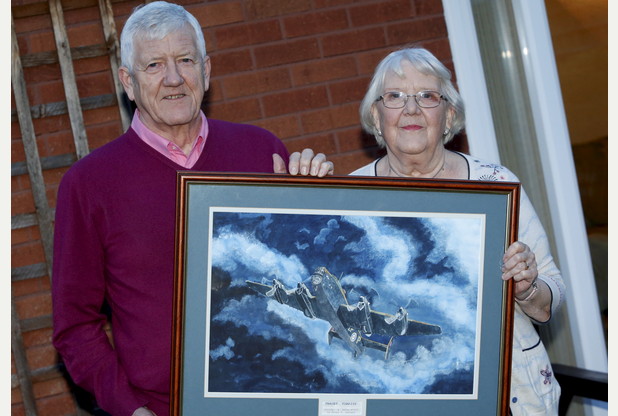A Halifax bomber used during World War Two has finally been located in a Norwegian fjord. The armed forces knew it had been downed in the area, but its wreckage had never been found until now.
Two air force servicemen remained in the bomber when it crashed, Flight Sergeant Alfred Columbine, the navigator, and Sergeant Arthur Evans, the plane’s wireless operator. Four other servicemen were able to evacuate the plane when it crashed and used one of its lifeboats to get to land.
The investigation of bomber’s remains show that the port wing was caught by heavy flak and a fire started, so the pilot managed to down the plane into the fjord.
Sergeant Columbine’s two children, David 72 and Sylvia 75, have been delighted to finally have answers over their father’s death. David, however, never met his father. Their mother, Elsie, had been only two months pregnant when Sergeant Columbine died and even though she’d sent him a letter telling him of the news, the letter was returned to her unopened, so it must have arrived too late to notify him of the news.
Sylvia has fond memories of her father, and recalls how everyone from his mother, wife and wider family were devastated when he passed away.
In 1999, both families of Sergeants Columbine and Evans visited the Norwegian fjord where it was believed the plane and the two men were buried. But it wasn’t until now that this has been confirmed.
The aircraft was located when Norwegian engineers were laying pipelines in the fjord. They notified the Norwegian University of Science and Technology who were then able to send Professor Martin Ludvigsen, of the university’s marine technology department, and a team of six students to investigate the site.The students sent a remote control submarine underwater to take a look at the site and confirmed it was the Halifax W7657, around 600ft underwater.
The submarine was able to send back video footage of the plane, which looks hardly damaged.Professor Ludvigsen says that the tail fin and one of the wings looked broken, and of course a lot of corrosion, but aside from that there wasn’t much other damage.
They still haven’t been able to find the Halifax bomber’s serial number, but they are pretty much certain it is the aircraft in question. Mainly because of its location, the corresponding damage it received and one of its lifeboats missing, which is consistent with the escaped crew members.
The bomber was part of a squadron sent to attack the Nazi’s heaviest battleship the Tirpitz, in 1942. The Tirpitz was finally sunk by an RAF bomber force, the Nottingham Post reports.
The decision now has to be with the authorities as to whether the plane is resurrected and the bodies exhumed from their crash site, or whether the plane and their remains are left as a war grave in the fjord. The Norwegian Aviation Museum and the British Embassy are liaising to investigate the options.
